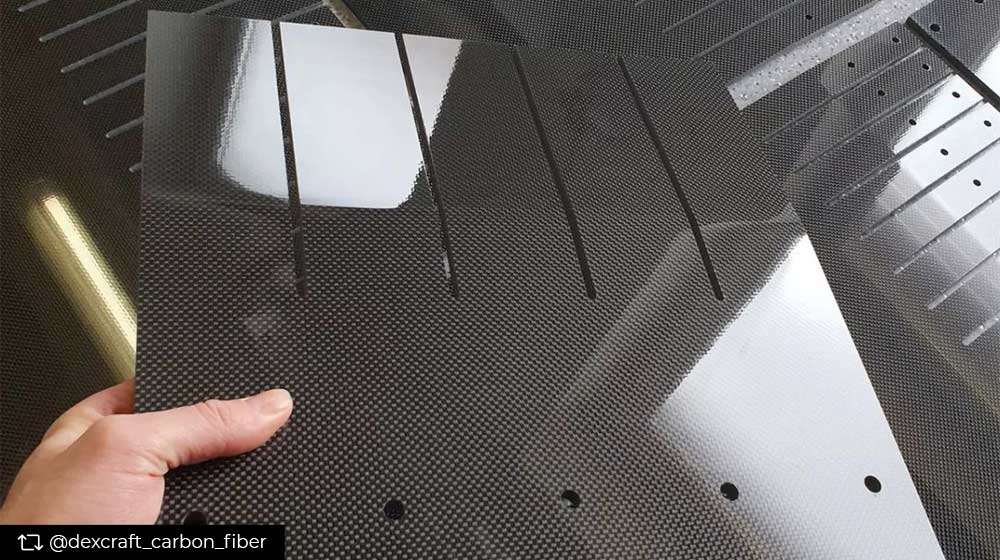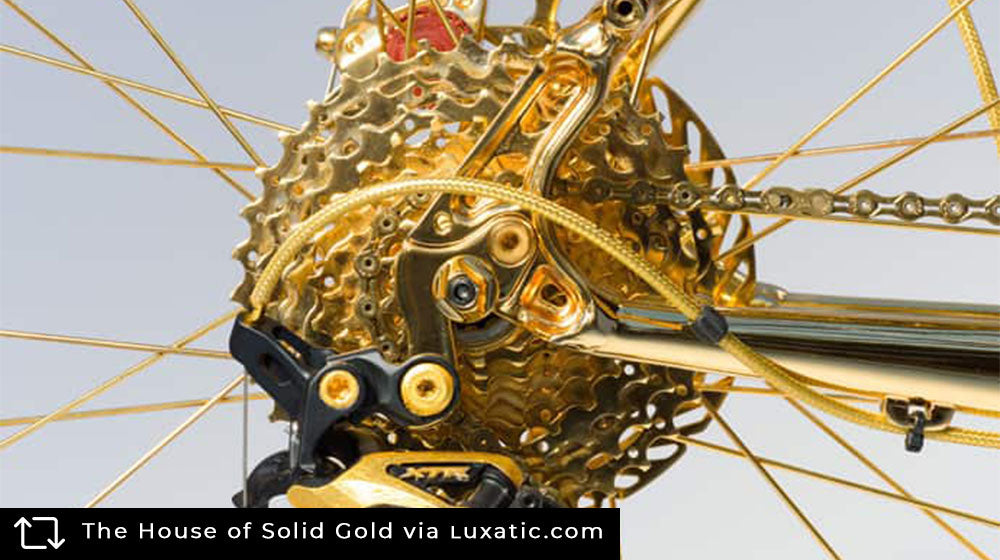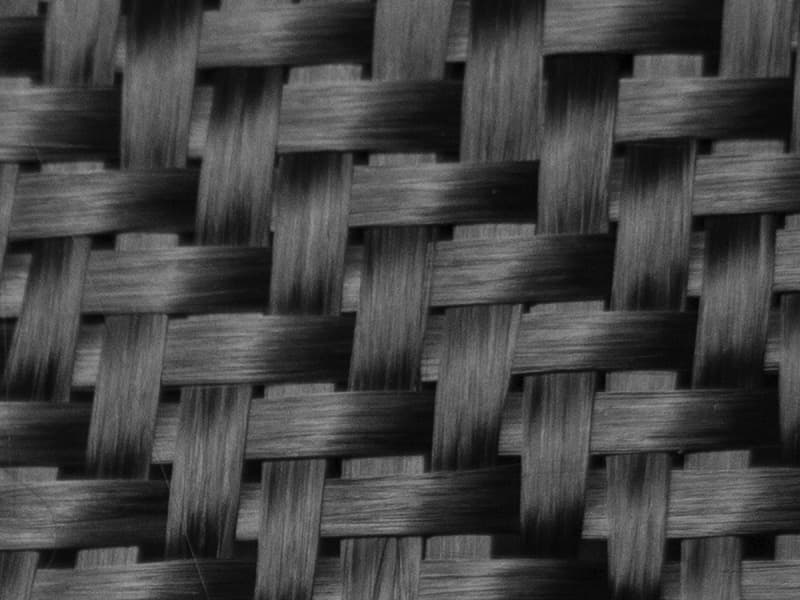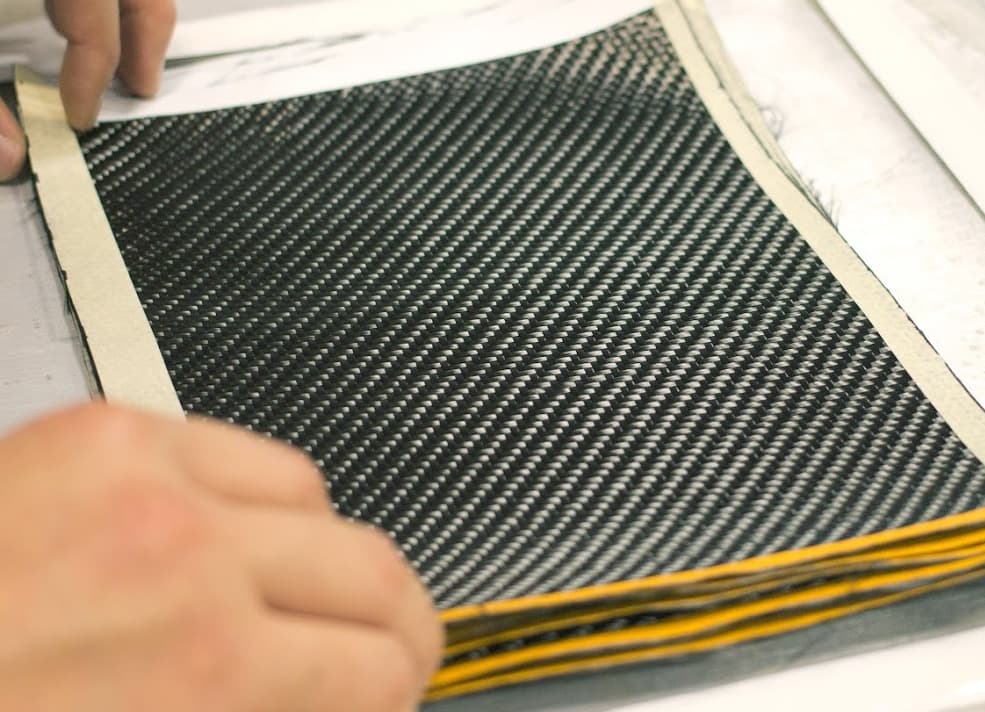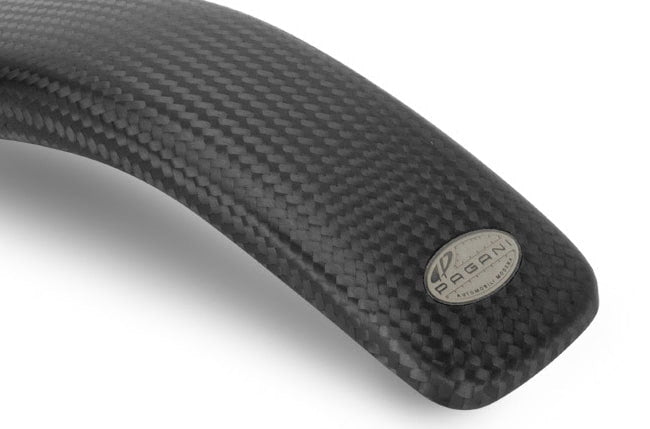Hey, you!
I know you came for our awesome blog post, but we have to let you in on something. Our main business is a shop that sells a ton of unique and cool lifestyle and personal accessories made with REAL carbon fiber.
If you love carbon fiber as much as we do, go explore!
Welcome to the ultimate guide to Forged Carbon aka Forged Carbon Fiber aka Forged Composites. We’ll take a deep dive into everything from what it is, how it’s different from standard carbon fiber, how much it costs, how it’s made, and then some.
RELATED: How to Make Carbon Fiber from Scratch At Home
Why should you trust what we say? Carbon Fiber Gear has specialized in carbon fiber since 2007. We live this stuff. Most people new to carbon fiber tend to think of stuff like car parts or bicycles. We make lifestyle products like carbon fiber wallets, carbon fiber iPhone cases, carbon fiber rings and even have a collection of forged carbon fiber products. If you have an affinity for carbon fiber material and love the idea of bringing it into your lifestyle, you’ve come to the right place.
Once you’re done reading through this, you’ll be an expert on forged carbon fiber. Use our table of contents to learn about a specific part you want to know, scroll through and take it all in.
In This Article:
- The Carbon Fiber You Already Know
- What is Forged Carbon, Also Known as Forged Composite?
- How is Forged Carbon Fiber Made?
- When Does it Make Sense to Use Forged Carbon?
- Is Forged Carbon Fiber Expensive?
- Is Forged Carbon Fiber Better?
- How Forged Composites Started
- Demand for Forged Carbon
1. The Carbon Fiber You Already Know
The carbon fiber most of us are used to seeing in the pattern that we love starts from a dry woven fabric called a 2x2 twill or diagonal weave. From there, it gets placed into a mold, infused with resin, and cured to become a rigid carbon fiber part. All said and done; a part comes out looking something like this:
Pictured: Carbon fiber clock made with bits from a real Formula 1 car. Twill weave carbon fiber fabric.
Another common woven carbon fiber is a 1x1, also known as a plain weave.
Pictured: Carbon Fiber Gear Stealth 2.0 pen with plain weave carbon fiber.
These are some of the most common ways carbon fiber is woven and seen in its final parts. It’s probably what you’ve already seen on things from bicycle frames to the OEM dash panels of a Tesla.
Read more about carbon fiber weave patterns here: Carbon Fiber Like You’ve Never Seen Before.
2. What is Forged Carbon, Also Known as Forged Composite?

Forged Carbon Fiber vs. carbon fiber, here we go.
The main difference between regular woven carbon fibers and Forged Carbon Fiber (aka Forged Composite) is that it’s made from either a paste or tiny chopped carbon fibers. There is no distinct pattern as the fibers are oriented entirely randomly, so each finished Forged Carbon product will be unique to itself.
The finished product has a totally different aesthetic over its woven counterpart, which looks more like a marbled carbon fiber than a woven fabric:

3. How is Forged Carbon Fiber Made?
So how do we get to such a drastically different final product? With Forged Carbon/Forged Composite, the chopped-up carbon fibers are typically placed into a compression mold. Resin is infused inside, and everything is then compressed together into the mold using a lot of pressure (get it, compression mold 😛):
Pictured: Langzauner hydraulic presses, producing carbon fiber SMC parts. Source: Composites World.
This process is similar to forging metals, hence the name Forged Carbon. Technically, the compression molding method is the only authentic way to call something forged. There are a few other ways to get the look of Forged Carbon without needing a compression mold that is worth discussing.
FORGED CARBON FIBER PRE-PREG
If you’re unfamiliar with prepreg, it’s a pretty simple concept. Typically, when making a carbon fiber part, you take a dry fabric, put it into a mold, and then infuse (aka impregnate) the material with an epoxy resin. There’s a whole process around making sure you are using the best resin ratio to fabric (maybe a topic for a different post?). On the other hand, pre-preg is “pre-impregnated” with the epoxy resin (at a perfect ratio) when you get the material. Pre-preg is excellent, but it’s expensive, requires cold storage, and eventually expires if not used.
Back to the chopped fiber pre-preg, this would basically arrive to you in a sheet that you could overlay over an existing product or use in the outer layer of your mold to get the Forged Carbon look without using a compression mold.
FORGED CARBON DRY FABRIC
One unique material we found was a particular dry Forged Carbon fabric made by Ulticarbon. This material fuses together a layer of chopped fibers with a fine, non-woven carbon fiber backing.
This keeps all the chopped fibers together delicately, which can then have epoxy resin applied to complete your project. This is an excellent alternative to prepreg since there is no resin and therefore doesn’t require any cold storage or have an expiration date. It is still an expensive material, and you will need to be able to apply your resin to the material to create your finished part.
Here’s an example of how a part was made using this material:
HAND-PLACING CHOPPED FIBERS
The least expensive alternative is to purchase chopped fibers, typically sold by the pound and in different lengths. You can then either place these fibers into a mold by hand or overlay on an existing product when you’re looking just to get the aesthetic.
Pictured: Chopped carbon fibers.
Source: ACP Composites
You can even take a woven fabric and cut it up yourself as they did in this video:

4. When Does it Make Sense to Use Forged Carbon?

Outside of trying to get the Forged Carbon look, why would you ever use it over a woven fabric?
Great question. I’m glad you asked! There are 2 key reasons you’d go with a Forged Carbon: shape and speed.
With a woven fabric, there are some limitations to the shapes you can make. Things like a 90-degree corner are impossible to do with a woven fabric because you just can’t scrunch the material into the corner perfectly.
It can be very time-consuming to lay a woven fabric up, with a lot of room for error. Forged carbon can be made to any shape (the mold is your limit), and you can pump out parts super quickly. Additionally, you can make a solid three-dimensional part that can be machined further.
5. Is Forged Carbon Fiber Expensive?
When you’re talking about using Forged Carbon in a production setting to make a high volume in parts, you’d need to go the compression molding route mentioned above.
One of the downsides is the upfront cost of making a compression mold (let alone the ability to do compression molding in the first place) is many times more expensive than your standard molds, which already aren’t cheap. This is one of the reasons it only makes sense to consider Forged Carbon when you’re pumping out tons and tons of parts, so you can help spread the initial costs through each piece.
Let’s put some numbers behind this so you can have an accurate understanding of what to think about. Say it costs $25,000 to make your initial compression mold. Then, it costs you $100 to make each part. If you build just one part from that mold, that part will cost you a total of $25,100. If you can make 10,000 parts from it, your cost per part becomes $102.50. The initial mold cost added just $2.50 (2.5%) per part at that volume.

6. Is Forged Carbon Fiber Better?

It’s worth noting that carbon fiber aficionados would point out that you can make a stronger part with standard woven fabric. Woven fabric can be stronger and more durable because of the control in its tensile strength, the direction(s) the fabric is aligned. You have complete control in the strength, whereas chopped fibers are short and aren’t aligned in a particular direction.
Each method has its pros and cons, and it really is dependent on the application and the final product as to which method makes more sense. The main factors and requirements to think about are (in no particular order):
- Aesthetics
- Strength
- Part volume
- Shape
- Cost
- Time
RELATED: How Strong Is Carbon Fiber? | Learn What Makes This Element So Tough
7. How Forged Composites Started
While on a project for Boeing, Dr. Paolo Feraboli invented the technology for what would be coined Forged Composites by Lamborghini. In 2008, Dr. Feraboli developed it further with both Callaway and Lamborghini at the same time.
This initial development leads to two major product releases. From Callaway came the Diablo Octane driver:
At the same time, Lamborghini developed a concept car you may remember, called the Sesto Elemento:

This was Lamborghini’s opportunity to show how Forged Composites can be used in a vehicle, and the Sesto Elemento was a tribute to that. The entire monocoque chassis, suspension arms, and tons of other bits and pieces were all made from Forged Composites.

Since the release of the concept, Lamborghini has been using the material in more and more of its mainstream vehicles, such as in the Huracán Performante:

Like those? You’ll love these:
- Street Legal Pagani Zonda Revolucion
- Porsche Taycan With Carbon Fiber Aero Kit
- Ford GT500 With Carbon Fiber Accessories
8. Demand for Forged Carbon

Lamborghini’s highly publicized launch of the material has really helped push it into the mainstream and popularized Forged Carbon as an alternative to the traditional woven fabrics. Even in our own customer base with lifestyle products, we’ve seen more and more demand for product.












